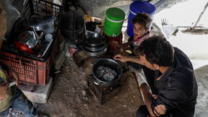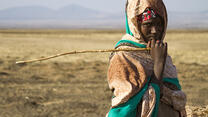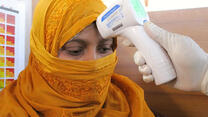COVID-19 has already overwhelmed health systems in high-income countries. As it spreads to fragile and crisisaffected countries, it threatens even greater devastation. There is a small window left to mount a robust response while COVID-19 is still in the early stages of spreading to these settings. COVID-19 is a global threat requiring a global response, but the steps to contain it should be designed locally, particularly in the crisis settings where the International Rescue Committee (IRC) works, to avoid exacerbating humanitarian suffering.
In the face of an unprecedented threat, governments worldwide have understandably followed the models of those countries hit first by COVID-19 to mitigate the impact of the disease. Many have swiftly adopted measures like lockdowns and strict travel restrictions. But a one-size-fits-all model will not work. This is especially true in humanitarian settings, which face a “double emergency” from COVID-19: the direct health impact and its secondary devastation to these states’ fragile humanitarian, economic, security and political environments.
In humanitarian contexts, living conditions make social distancing nearly impossible, workers in informal sectors cannot transition to working from home, and governments are unable to provide sufficient relief packages or social safety nets. Sweeping mitigation measures like those undertaken in Italy or the United States will not just be difficult to implement but could cause longer term and more widespread harm than the disease itself. Already, international and domestic restrictions have slowed the transportation of COVID-19 equipment, halted vaccination campaigns, disrupted supply chains of treatment for malnourished children, and prevented medical staff from being deployed in countries with weaker health systems.
To avoid these outcomes, COVID-19 mitigation efforts need to be adapted to local contexts as part of a balanced response that considers all needs. They will also need to include displaced populations and other vulnerable groups – those most likely to face pre-existing barriers to assistance and protection as well as exclusion now from governments’ COVID-19 responses and relief programs. Recent, positive adaptations have included Somalia’s tax exemptions and reductions on imports of some food items, Zimbabwe’s easing of restrictions on agricultural production, and a commitment by members of the Inter-Governmental Authority on Development trade bloc in Africa to develop a regional response plan to COVID-19 that includes refugees, internally displaced persons (IDPs), and other vulnerable groups. These states will require greater political, financial, and technical support from the international community to sustain these policies.
While COVID-19 is a novel virus and much is still unknown, it is clear that its impact in these settings will be different than in the wealthier countries first hit by the pandemic. As such, the solutions to prepare and respond in these contexts must be bespoke. Lessons learned from other disease outbreaks and crises have shown the need to understand local dynamics, listen to affected populations and be willing to adjust the response. Frontline NGOs, like the IRC, can be trusted interlocutors in these communities to share vital information about the disease and implement measures that are sensitive to local contexts and pre-existing needs to mitigate the potentially devastating impacts on health, protection, livelihoods, and food security.
IRC’s Key Recommendations
- Donors should ensure immediate COVID-19 response financing reaches frontline responders.
- Authorities should adapt and limit restrictions on the movement of humanitarian personnel, humanitarian and COVID-19 supplies, essential medicines, and food.
- Donors, response actors, and host governments should work together to adapt restrictions to local contexts to ensure access to food and other basic goods as well as health, water and sanitation, protection, livelihood, and education services for all populations.
- Donors, response actors, and host governments should facilitate mechanisms for learning and adapting as COVID-19 persists.
- Donors and governments should include vulnerable populations (refugees, IDPs, and other vulnerable populations) in immediate and long-term plans to address COVID-19 and its secondary impacts.



